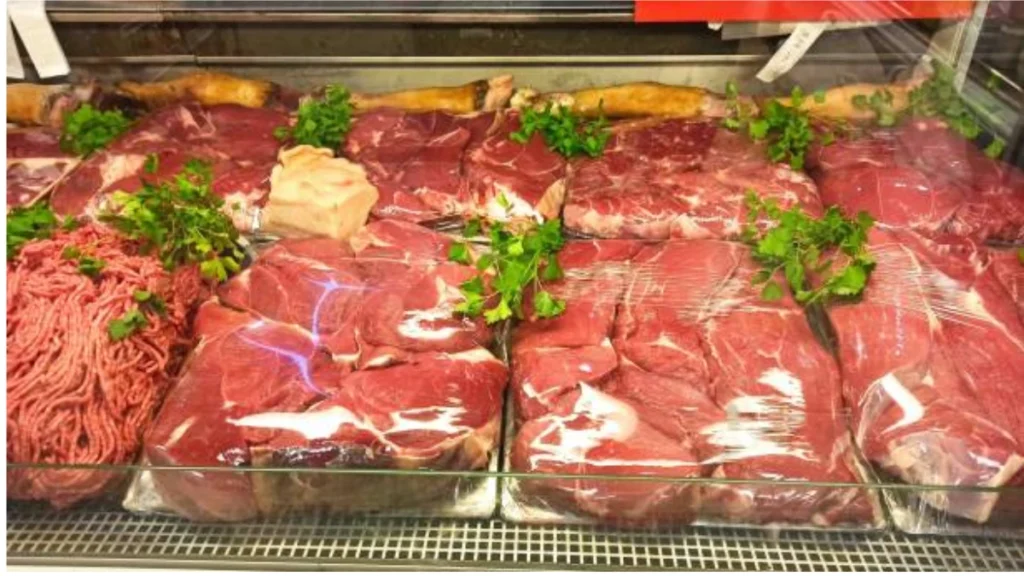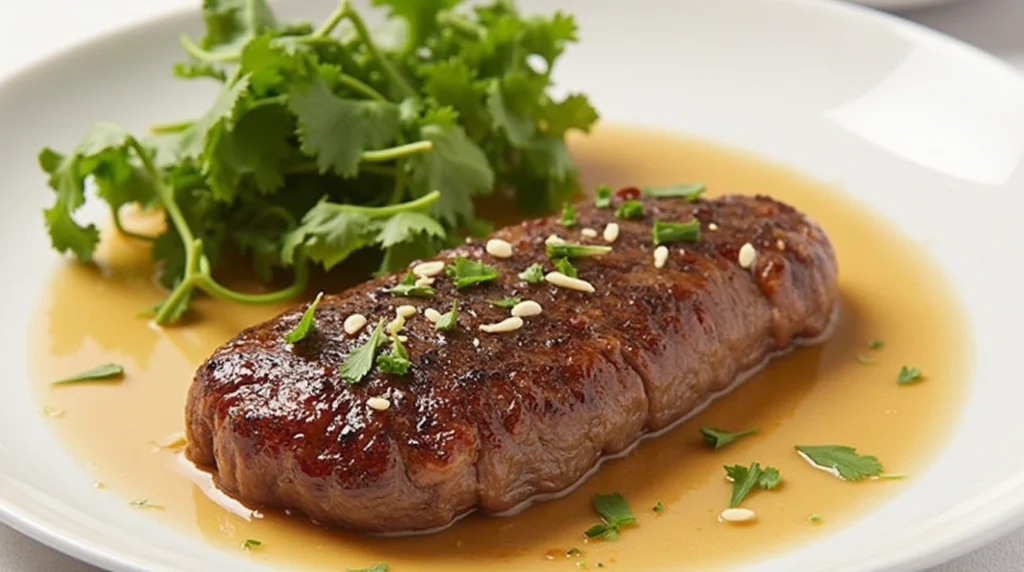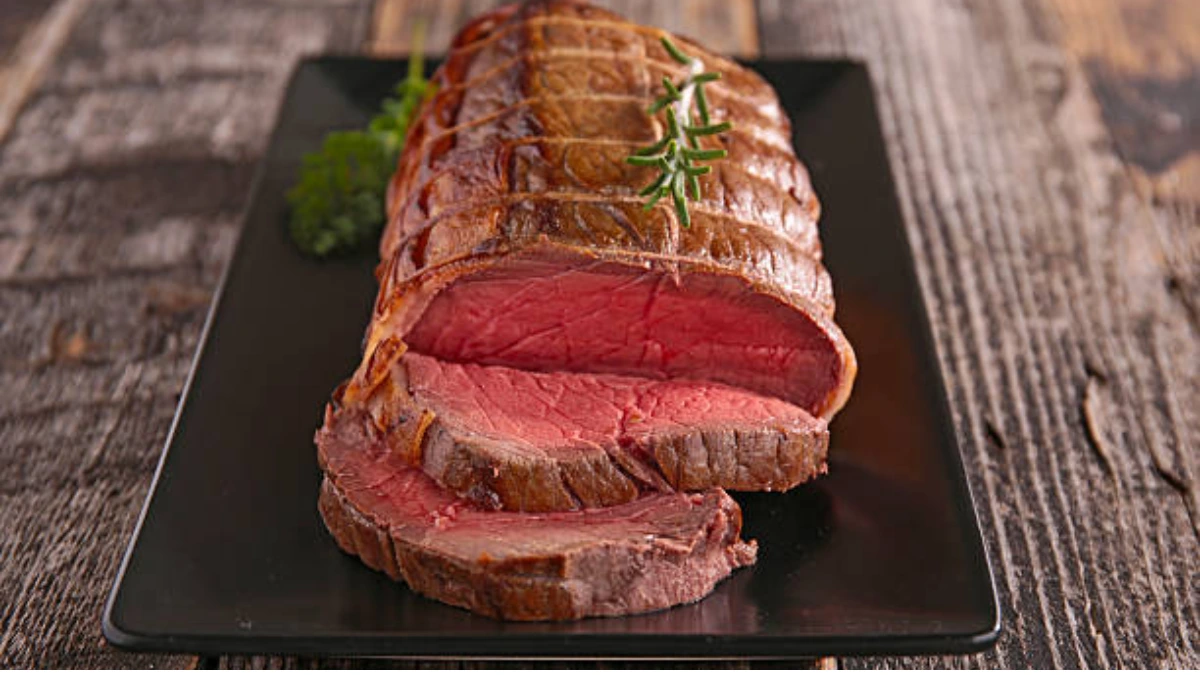Introduction: Why Beef Cheek Meat Deserves a Spot on Your Menu
In the world of culinary innovation, beef cheek meat stands out as a surprisingly underutilized cut with immense potential. Many chefs and home cooks alike have yet to fully appreciate its rich flavor, tender texture, and versatility in the kitchen. This unassuming cut offers more than meets the eye. If you’re looking to elevate your menu and bring something unique to the table, beef cheek meat deserves serious consideration.
A Hidden Gem in the World of Meat
Beef cheeks, though not as commonly used as cuts like ribeye or sirloin, are rapidly gaining recognition for their remarkable qualities. Historically, this cut was reserved for stews and slow-cooked dishes, but it’s now being embraced by modern chefs eager to explore less conventional options. The richness and depth of flavor in beef cheeks provide an exceptional base for a variety of dishes, making it a culinary treasure worth discovering.
What Makes Beef Cheek Meat Stand Out?
What truly sets beef cheek meat apart from other cuts is its ability to absorb flavors and transform during cooking. The muscle fibers in the cheek are tightly packed, creating a structure that becomes incredibly tender when slow-cooked. Additionally, beef cheeks have a natural layer of connective tissue that melts down during cooking, infusing the meat with a deep, savory richness that is hard to replicate in other cuts.
Reason 1: Exceptional Flavor Profile of Beef Cheek Meat
Tender and Rich Taste That Sets It Apart
Beef cheek meat offers an unparalleled flavor that distinguishes it from other cuts. The slow-cooked collagen in the cheeks breaks down, releasing gelatin that enhances the meat’s taste and texture. As a result, the meat becomes infused with a full-bodied richness, often described as having a beefy, umami-packed flavor with a subtle sweetness. The natural marbling and fat content give it a melt-in-your-mouth quality that keeps diners coming back for more.
The Unique Flavor Combinations It Pairs Well With
Beef cheek meat is incredibly versatile when it comes to flavor pairings. The richness of the meat complements a variety of herbs and spices, such as garlic, rosemary, thyme, and bay leaves. It also pairs beautifully with earthy vegetables like mushrooms, carrots, and onions. For those with adventurous palates, the meat can be seasoned with exotic ingredients like chipotle, cumin, or even cinnamon to add an unexpected depth of flavor. Whether you’re making a hearty stew or a gourmet taco, the robust flavor of beef cheeks will elevate any dish.
How Long, Slow Cooking Elevates the Taste
The true magic of beef cheek meat lies in slow cooking. By braising or simmering the meat over a long period, the fibers break down slowly, allowing the flavors to meld together in perfect harmony. This method allows the beef cheek to become tender and juicy while developing a rich, complex flavor profile. The extended cooking time ensures that every bite is succulent and full of taste, making slow cooking the ideal method for preparing this particular cut.
Reason 2: The Tender Texture You Can’t Ignore
Why Beef Cheek Meat Becomes So Tender When Cooked Correctly
The key to the tenderness of beef cheek meat lies in its high concentration of collagen. Unlike cuts like steak that are composed mainly of muscle fibers, beef cheeks contain a significant amount of connective tissue. When cooked over low heat for an extended period, this collagen breaks down and transforms into gelatin, which gives the meat its signature melt-in-your-mouth texture.
How Slow Braising Makes It Irresistibly Soft
Slow braising is the ideal cooking technique for beef cheek meat, allowing it to become incredibly soft while maintaining its rich flavor. During braising, the meat is cooked in liquid at a low temperature for hours, which breaks down the connective tissue and infuses the meat with the flavors of the braising liquid. The result is a melt-in-your-mouth texture that can’t be replicated by faster cooking methods.
The Melt-in-Your-Mouth Quality: What Makes It Happen?
What gives beef cheek meat its melt-in-your-mouth quality is the breakdown of collagen into gelatin. As the connective tissue dissolves, it imparts a silky, tender texture that envelops the meat in luxurious softness. This transformation occurs only when cooked low and slow, making it a cut best suited for braising, stewing, or slow-roasting.
Reason 3: Versatility in Cooking Styles
Beef Cheek Meat in Slow-Cooked Dishes
While beef cheek meat shines in slow-cooked dishes, it is far from limited to stews and braises. It can be used as the centerpiece of various slow-cooked meals, such as pot roast or beef bourguignon. The slow-cooking process allows the beef cheeks to absorb the flavors of the dish, resulting in a rich and savory flavor profile that is perfect for comforting, hearty meals.
Grilled and Seared: A New Take on Beef Cheeks
While slow cooking is the traditional method for preparing beef cheeks, grilling or searing can also yield delicious results. By cooking beef cheek meat at a high temperature for a short period, you can achieve a caramelized exterior while keeping the interior juicy and tender. This method can be used to create unique dishes, like beef cheek sliders or grilled beef cheek skewers, offering a new take on this underutilized cut.
Beef Cheek Meat in Stews, Tacos, and More
Beef cheeks are an ideal choice for stews, tacos, and other comfort foods. Their rich flavor and tender texture make them perfect for slow-cooked, flavorful stews. In tacos, beef cheeks shine with their juicy tenderness, often paired with fresh toppings like cilantro, onions, and a squeeze of lime. The versatility of beef cheek meat allows for a variety of dishes that cater to different culinary styles.
How to Use Beef Cheek Meat in Fine Dining Recipes
In fine dining, beef cheek meat can be transformed into elegant dishes. When braised and paired with gourmet sauces, like a red wine reduction or a rich demi-glace, beef cheeks become a sophisticated option for upscale menus. With the right preparation, this humble cut can shine as the star of any fine dining experience.

Reason 4: Cost-Effective and Sustainable Choice
Why Beef Cheek Meat Is a Budget-Friendly Option for Restaurants
Beef cheek meat is an affordable alternative to premium cuts like ribeye or tenderloin. Despite its lower cost, the beef cheek offers a flavor and texture that rivals these expensive cuts. For restaurants looking to offer high-quality dishes at a lower price point, beef cheek meat is a great option that allows for impressive margins without compromising on taste.
How Sustainable Sourcing of Beef Cheeks Benefits Your Business
Sourcing beef cheeks sustainably can not only help your restaurant stand out but also align with ethical and environmental considerations. By using underutilized cuts, you contribute to reducing food waste and making use of the whole animal. Additionally, sustainable sourcing practices help support local farmers and promote the ethical treatment of livestock.
A Budget-Friendly Cut with Premium Results
While beef cheeks are priced lower than more traditional cuts, the resulting dishes can be elevated to gourmet levels with the right preparation. This makes beef cheek meat a great choice for restaurants seeking to provide customers with premium dining experiences at a fraction of the cost of other cuts.
Reason 5: Rising Popularity and Customer Demand
How Beef Cheek Meat is Becoming a Trend in Modern Cuisine
In recent years, beef cheek meat has experienced a resurgence in popularity. As diners seek out more unique and adventurous culinary experiences, cuts like the beef cheek have found their place on the menus of top restaurants. Its growing popularity is driven by a renewed interest in nose-to-tail eating and a desire for deeper, more complex flavors.
Meeting Customer Demand for Unique Cuts
Today’s consumers are more curious than ever about different cuts of meat. They are eager to try new flavors and textures that set them apart from traditional offerings. Beef cheek meat caters to this demand for novelty, appealing to foodies looking for something out of the ordinary, but still rooted in classic culinary techniques.
Attracting Foodies with Creative Beef Cheek Dishes
By incorporating beef cheek meat into your menu, you can attract a new wave of food enthusiasts eager to try innovative dishes. From tacos to gourmet braises, creative preparations using beef cheeks will excite adventurous diners, elevating your establishment’s reputation as a place that pushes culinary boundaries.
How to Prepare Beef Cheek Meat Like a Pro
Step-by-Step Guide to Preparing Beef Cheeks for Cooking
Preparing beef cheek meat requires some patience, but the results are well worth the effort. Begin by trimming the cheeks of any excess fat or sinew, ensuring a clean cut. Searing the meat on all sides is crucial for developing a deep, flavorful crust. Once seared, braise the cheeks in a flavorful liquid, such as red wine or beef broth, until they are tender and full of flavor.
Essential Cooking Techniques: Braising, Roasting, and More
Braising is the most common technique used for beef cheeks, but other methods, such as slow roasting, also yield excellent results. Roasting beef cheeks in the oven at low temperatures ensures even cooking and enhances the meat’s natural flavors. Regardless of the method, it’s important to cook the meat low and slow to achieve the desired tenderness.
Tips for Enhancing the Natural Flavors of Beef Cheek Meat
To truly enhance the natural flavors of beef cheek meat, consider marinating the meat overnight. This allows the beef to absorb additional spices and flavors. Additionally, adding aromatics like garlic, onions, and herbs during the cooking process will further elevate the flavor profile.
Common Mistakes to Avoid When Cooking Beef Cheek Meat
Overcooking or Under-Cooking: Finding the Right Balance
The key to cooking beef cheek meat lies in getting the timing just right. Overcooking can cause the meat to dry out, while undercooking will leave it tough. A slow-cooked method is essential, but monitoring the meat’s tenderness is crucial to avoid these pitfalls.
Skipping the Marination Process: Why It Matters
Marinating beef cheek meat enhances its flavor and tenderness, so skipping this step can result in a less flavorful dish. A well-chosen marinade helps break down the fibers, infusing the meat with richness and depth.
Using the Wrong Cooking Equipment: What to Avoid
Using equipment that doesn’t allow for even heat distribution can lead to uneven cooking, which is a common mistake when preparing beef cheek meat. A Dutch oven or slow cooker is ideal for braising, while a heavy-bottomed pan is necessary for proper searing.
Health Benefits of Beef Cheek Meat
The Nutritional Value of Beef Cheek Meat
Beef cheek meat is rich in protein, making it an excellent choice for those seeking a nutrient-dense meal. Additionally, it provides a significant amount of essential vitamins and minerals, including iron, zinc, and B vitamins.
High in Protein and Low in Fat: A Leaner Option
Though beef cheek meat is relatively high in fat compared to leaner cuts, it contains a balance of healthy fats and protein. When prepared properly, it is a great option for those looking to enjoy a rich, satisfying dish without overindulging in unhealthy fats.
Rich in Collagen for Skin, Joint, and Bone Health
The collagen content in beef cheek meat offers health benefits beyond the kitchen. Collagen is known to support joint health, improve skin elasticity, and promote strong bones. Thus, consuming beef cheek meat can contribute to overall wellness, in addition to providing a delectable dining experience.
Beef Cheek Meat Pairings That Will Wow Your Guests
Best Sides and Vegetables to Pair with Beef Cheek Dishes
Beef cheek meat pairs wonderfully with a variety of sides, from creamy mashed potatoes to roasted root vegetables. Additionally, braised greens and a rich gravy will complement the flavors of beef cheeks, creating a well-rounded dish that will impress guests.
Wine Pairings for Beef Cheek Meat Dishes
A hearty dish of beef cheek meat calls for a wine that can stand up to its rich flavors. Consider pairing it with a bold red wine, such as Cabernet Sauvignon, Malbec, or Syrah, which can enhance the savory characteristics of the meat.
Creating Perfect Sauces and Condiments for Beef Cheeks
A flavorful sauce is essential to complement the richness of beef cheeks. Consider serving them with a red wine reduction, horseradish cream, or even a tangy chimichurri sauce to balance out the savory depth of the meat.

How Beef Cheek Meat Fits into Modern Food Trends
The Growing Popularity of Nose-to-Tail Eating
Beef cheek meat is part of the growing trend of nose-to-tail eating, where chefs and home cooks make use of every part of the animal. This sustainable practice minimizes waste while promoting a deeper connection to the food being consumed.
Integrating Beef Cheeks into Plant-Based and Sustainability Menus
Even with the rise of plant-based diets, beef cheek meat remains a viable option for those looking for sustainable, ethically sourced animal products. Incorporating beef cheeks into menus alongside plant-based offerings showcases a commitment to sustainability.
Beef Cheek Meat and the Rise of Comfort Food Revival
As comfort food experiences a revival, beef cheek meat is gaining traction as a key ingredient. Its tender texture and rich flavor make it an ideal choice for hearty, soul-warming dishes that evoke nostalgia while offering a modern twist.
FAQS
Why do people eat beef cheeks?
Historically, beef cheek stews were often recommended by knowledgeable doctors for their healing properties. They were believed to aid in digestion and were sometimes suggested for individuals recovering from facial injuries or skin conditions, as the rich, collagen-packed meat was thought to help with recovery.
What are beef cheeks good for?
Beef cheeks are incredibly versatile and perfect for a variety of slow-cooked dishes. They’re great for stews, especially when cut into large cubes, or for Texas-style chili, where small cubes are used instead of ground meat. This cut also works wonderfully in dishes like ropa vieja. If you’re looking for a smaller, hearty meal, you can even prepare a beef cheek as a pot roast for two. The tenderness and rich flavor of beef cheeks make them an excellent choice for any slow-cooked recipe.
Is cheek good to eat?
Yes, beef cheeks are not only delicious but also packed with collagen, which is beneficial for the strength and health of your hair, skin, nails, and bones. Despite being an underrated cut of beef, it offers a rich, flavorful taste and a tender texture when cooked properly. The collagen content makes it especially good for slow-cooking methods, enhancing both the flavor and nutritional value of your meal.
Is beef cheek yummy?
Yes, beef cheeks can be absolutely delicious! When cooked properly, they become tender, sticky, and flavorful, with a rich, gelatinous texture that melts in your mouth. Many people love smoking beef cheeks, as the slow cooking process enhances their natural flavors, resulting in a deeply satisfying dish. When treated with care, they can become one of the most flavorful and enjoyable cuts of beef.
Conclusion: Why You Should Add Beef Cheek Meat to Your Menu
Recap of the 5 Key Reasons to Add Beef Cheek Meat
Beef cheek meat’s exceptional flavor, tender texture, versatility, cost-effectiveness, and rising popularity make it a prime candidate for any menu.
How Adding Beef Cheek Meat Can Set Your Menu Apart
Incorporating this unique cut into your offerings will not only enhance your menu but also set you apart as a forward-thinking restaurant or culinary establishment eager to experiment with new ingredients.
Final Thoughts: Embrace the Trend and Elevate Your Offerings
Beef cheek meat is more than just a passing trend—it’s a versatile, flavorful, and sustainable option that can elevate your culinary creations. Embrace it, and you’ll be ahead of the curve in delivering unique dining experiences.

